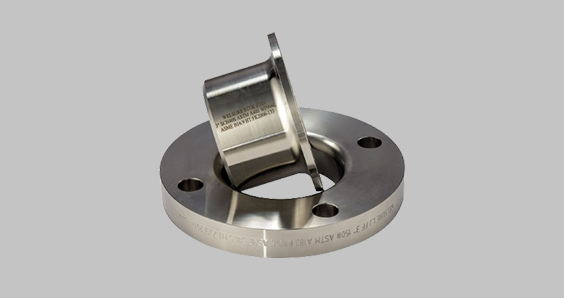When it comes to industrial piping systems, the integrity of connections is paramount. Lap joint flanges and stub ends are crucial components in achieving a reliable, flexible, and maintenance-friendly piping system. This blog delves into the significance of stub ends in lap joint flange connections, exploring their design, functionality, and advantages.
What are Stub Ends ?
Stub ends are essentially short lengths of pipes used in conjunction with lap joint flanges. They are designed to provide a unique solution for flange connections, particularly in systems requiring frequent dismantling for inspection and cleaning. Stub end pipe fittings come in various materials and sizes to suit different piping requirements and are typically used in conjunction with a backing flange.
Design and Types of Stub Ends
The primary design of a stub end involves a cylindrical tube with a flared lap. This design allows the stub end to be inserted into the pipe and welded in place, generally using abuttweld . The flared lap provides a surface that the lap joint flange can connect to securely
There are two main types of stub ends: Type A and Type B. Type A stub ends are used with standard lap joint flanges, while Type B stub ends have a collar and are used with slip-on flanges. The choice between these types depends on the pressure requirements and the alignment of the piping system
Importance of Stub Ends in Lap Joint Flange Connections
- Ease and Efficiency : The design of stub ends combined with lap joint flanges significantly simplifies the assembly and disassembly processes. This is particularly beneficial in systems where regular maintenance, cleaning, and inspection are necessary, as it allows for quick access to the pipeline without the need for complete disassembly. The ability to easily rotate flanges for bolt alignment and inspection also minimizes downtime and enhances operational efficiency.
- Economic Advantages : Stub ends enable the use of more economical flange materials because they handle the direct contact with the process fluid, allowing them to be made from higher-grade, corrosion-resistant materials. This setup ensures durability where it’s most needed while keeping costs low by allowing the bulk of the flange assembly to be constructed from cheaper materials. This approach provides a cost-effective solution that maintains high performance and durability.
- Durability and Protection : Stub ends serve an essential role in protecting the flange faces from erosion, chemical attack, and physical damage by providing a buffer between the flange and the process media. This protection is crucial in extending the lifespan of flange connections, especially in systems prone to misalignment or those operating under variable pressures and flows, which can induce additional stress on the flange faces.
- Versatility and Compatibility : The adaptability of stub ends to various materials and environments makes them ideal for a wide range of applications. They can be tailored to match the specific chemical and physical demands of the pipeline’s contents, ensuring compatibility across a spectrum of industries, including chemical processing, petrochemical applications, and water treatment facilities. This versatility ensures that systems can be designed to optimal specifications without compromising on safety or functionality.
- Enhanced System Integrity : The unique design of stub ends allows for slight movements within the piping system, which is crucial for accommodating thermal expansion and contraction. This flexibility helps prevent stress fractures and other damage associated with thermal variations. Moreover, the flared lap of the stub end enhances the sealing capacity between the flange faces, reducing the likelihood of leaks and increasing the overall integrity of the connection.
- Operational Flexibility : The use of stub ends in piping systems facilitates easier modifications and repairs. Sections of pipe can be added or removed with minimal disruption to the rest of the system, avoiding the need for extensive cutting, re-welding, and system downtime. This flexibility is particularly valuable in industries where system configurations may need to evolve due to process optimization or scaling.
- Streamlined Production and Maintenance : The simpler manufacturing process of stub ends compared to forged flanges reduces production time and costs. This efficiency can be passed along through the supply chain, resulting in cost savings and shorter lead times. Additionally, the straightforward design minimizes maintenance challenges, making routine checks and repairs more manageable and less costly.
These points succinctly capture the comprehensive benefits of using stub ends in conjunction with lap joint flanges, highlighting their critical role in enhancing the functionality and efficiency of industrial piping systems

Conclusion
The role of stub ends in lap joint flange connections is indispensable. They offer a practical, cost-effective, and reliable method of connecting and managing industrial piping systems. The ease of installation and maintenance that stub ends provide, coupled with their ability to protect the integrity of the flange, makes them a preferred choice in many industries. Nufit Flanges stands at the forefront of supplying premium quality stub end and lap joint flange components, ensuring your piping systems are built to last and perform efficiently
You can Contact Nufit Flanges at sales@nufitalloys.com to explore more information about the Stub Ends, and how you can implement them in your operations.

